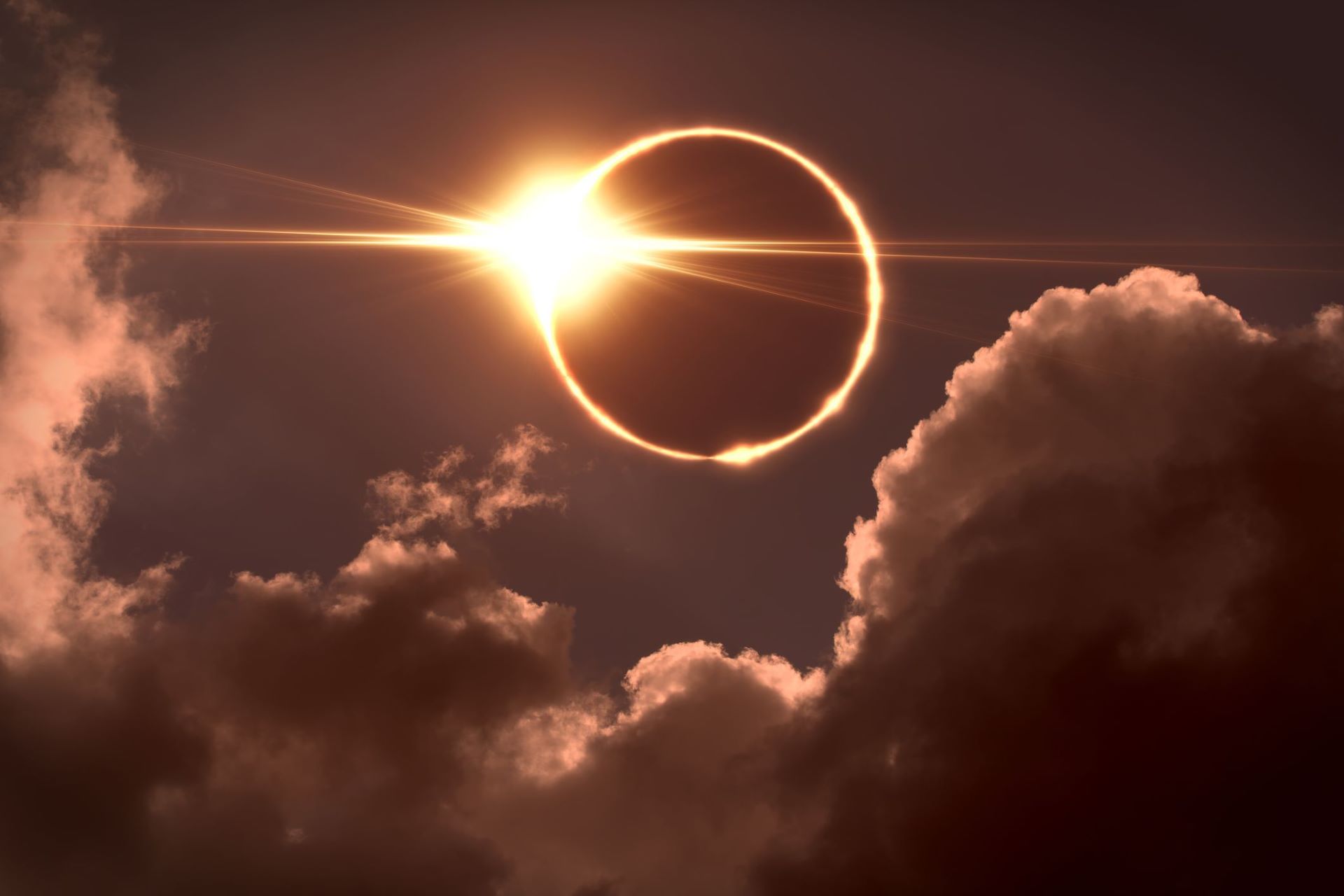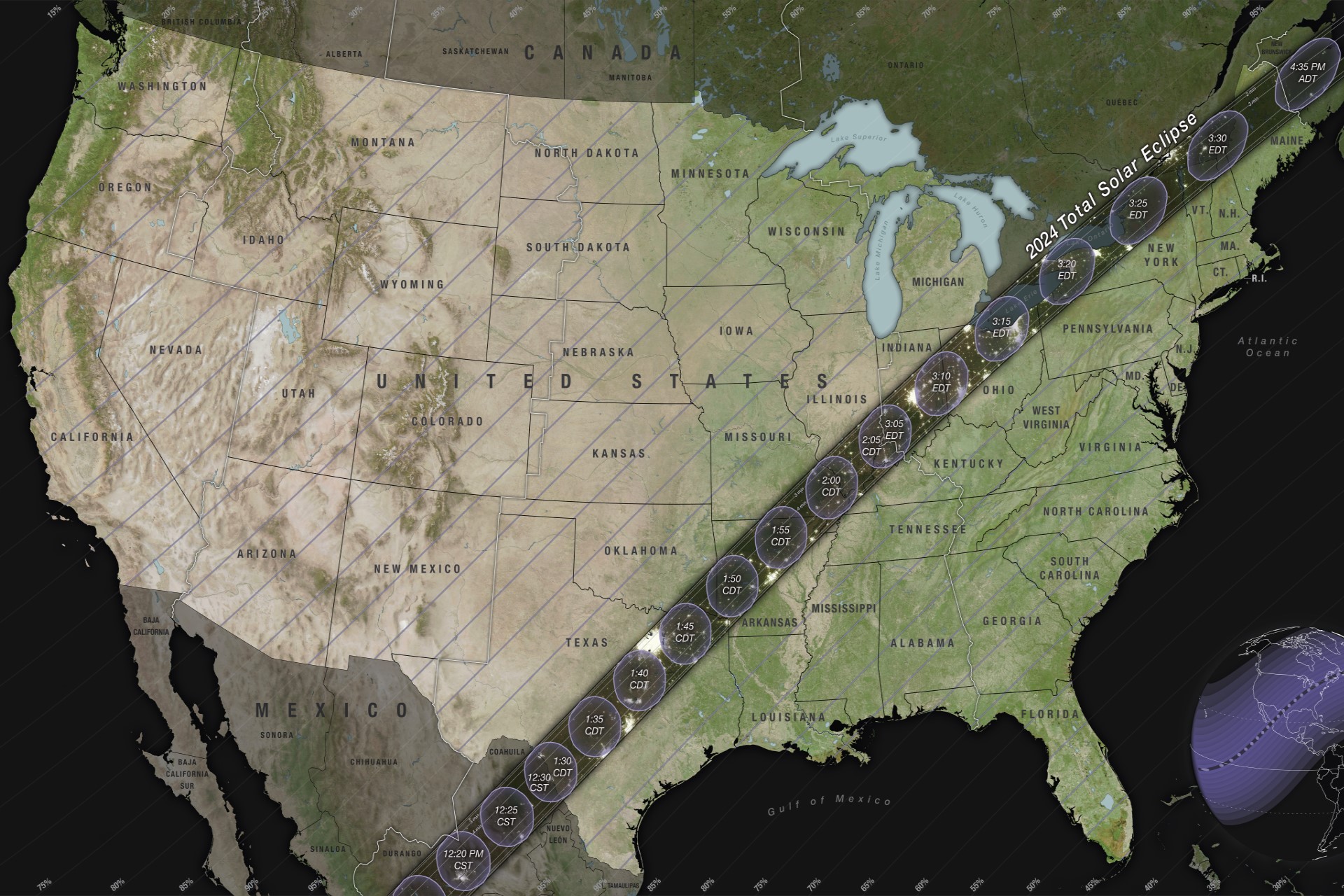On Monday, April 8, beginning at 2:00 pm, New Englanders have the chance to see a partial or total solar eclipse pass through our corner of the world. While we won’t see a total eclipse here in Massachusetts, you can expect to see 90% totality.
What Is an Eclipse?
Once viewed as an ill-omen or a portent of bad luck, solar eclipses, especially total solar eclipses, are one of the most spectacular sites you can view in the sky. Still, many people don’t completely understand why eclipses happen, so let’s unpack some of the science.
Due to their relative distances from earth, both the moon and the sun appear to be equally sized when viewed from our planet’s surface. The earth and the moon cast shadows from the sun’s light into space and as the earth-moon system orbits the sun, the shadow of one will occasionally fall on the surface of the other. For a solar eclipse, the moon has to be between the sun and the earth, much like it is during the monthly new moon.
So why don’t we have a solar eclipse every month? This is due to the moon’s orbit around the sun being tilted. The plane of the earth’s orbit around the sun is called the “ecliptic”; the moon’s orbit is tilted 5 degrees from the ecliptic and only intersects that plane along two lines called nodes. So, to see a total solar eclipse, a new moon has to happen at the same time the moon is crossing the ecliptic (a cloudless day is also helpful, of course).
What to Expect During the Solar Eclipse
Stephanie Majeau, Education Coordinator at Ipswich River Wildlife Sanctuary, remembers their first experience witnessing an eclipse and what we can expect. "The dim, eerie midday light stands out the most in my memory. Beginning from its typical blue hue, the sky darkened to an unusual golden-purple glow. Surrounded by 50 or so of my fellow students on a clear May day in 1994, I excitedly placed a box over my head that I had constructed into a pinhole projector so I could safely view my first partial solar eclipse. This was one of those rare, magical, and quirky experiences that made me fall in love with science."
The “path of totality” is where the darkest part of the moon’s shadow (the umbra) passes over the earth. Surrounding the edge of the umbra is the lighter part of the shadow called the penumbra. While some parts of the United States will see a total eclipse, Massachusetts will pass through the penumbra and witness a partial eclipse, over 90% totality.
Protect Your Eyes
The only safe time to directly observe the sun with unprotected eyes is during the totality of a total eclipse, when the sun is completely blocked by the moon. To safely view the entire eclipse event, you can make a “pinhole projector” to indirectly view the sun, use a telescope outfitted with proper filters for direct sun viewing, or get a pair of eclipse glasses that are certified ISO 12212-2 “filters for direct observation of the sun” (many public libraries have these available). Improper eclipse viewing can lead to permanent eye damage.
Where to Witness the Eclipse
The path of totality will cross 11 states, including Vermont, New Hampshire, and Maine. While we won't see a total eclipse, you can still expect to see 90% of totality in Massachusetts, which will be an exciting experience in itself! Your favorite wildlife sanctuary could be the perfect spot to witness the eclipse outdoors; check ahead to confirm they will be open (some sites with nature centers are closed on Mondays).
The next total solar eclipse visible in the US won’t be until 2044 so make sure to take advantage of this unforgettable opportunity!
Stay Connected
Don't miss a beat on all the ways you can get outdoors, celebrate nature, and get involved.




